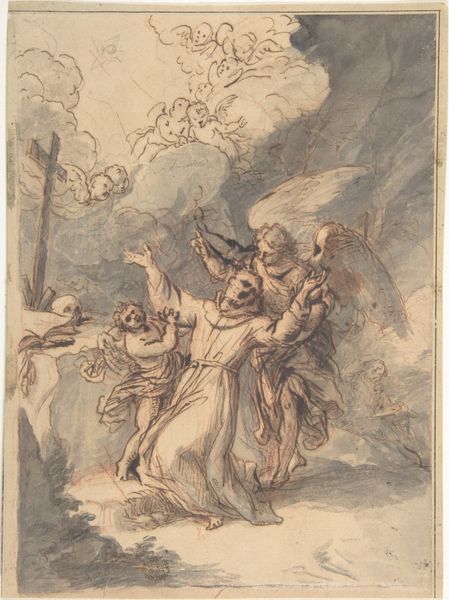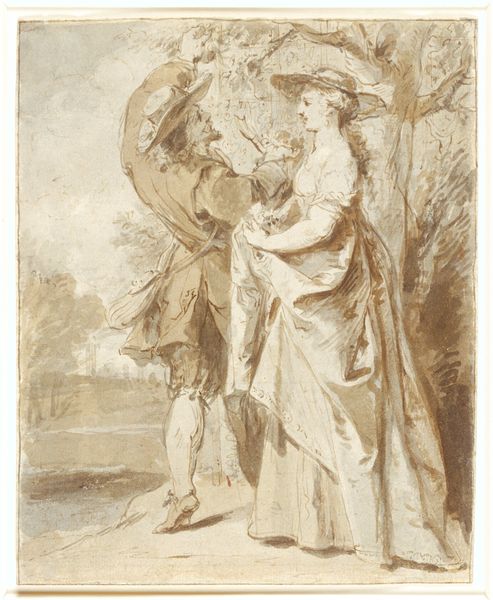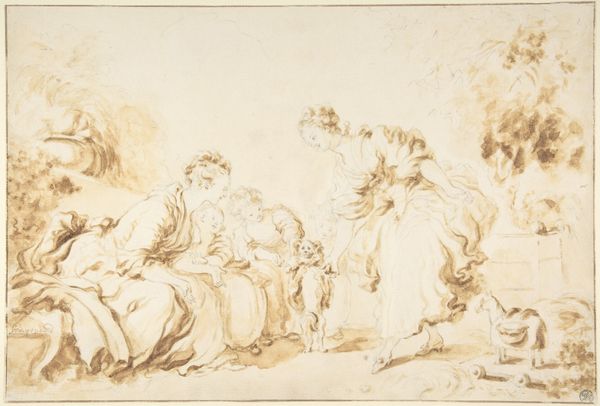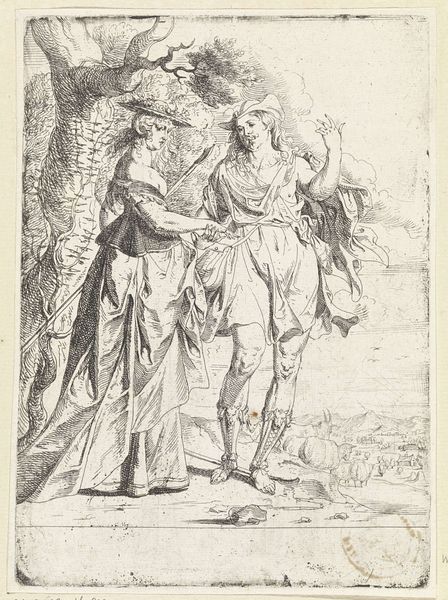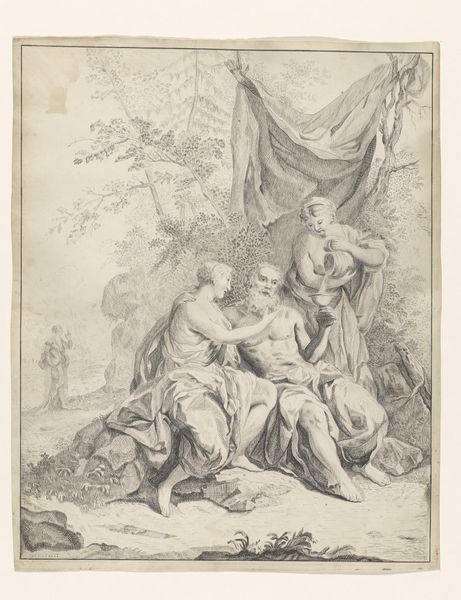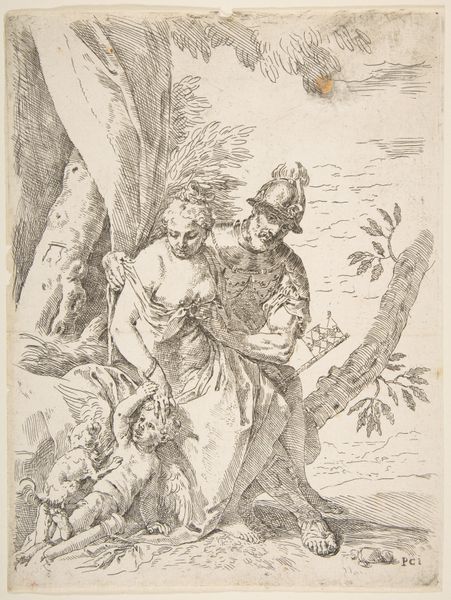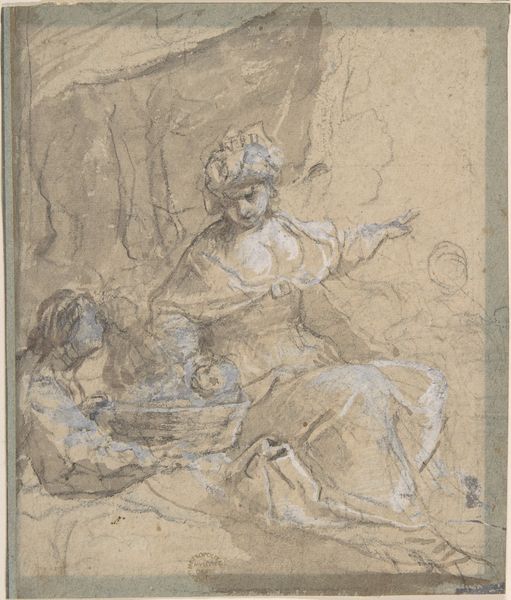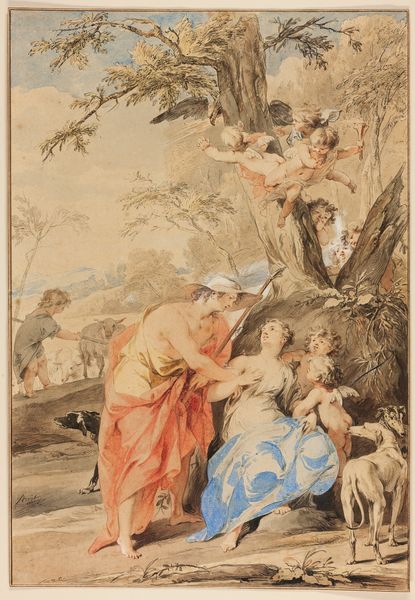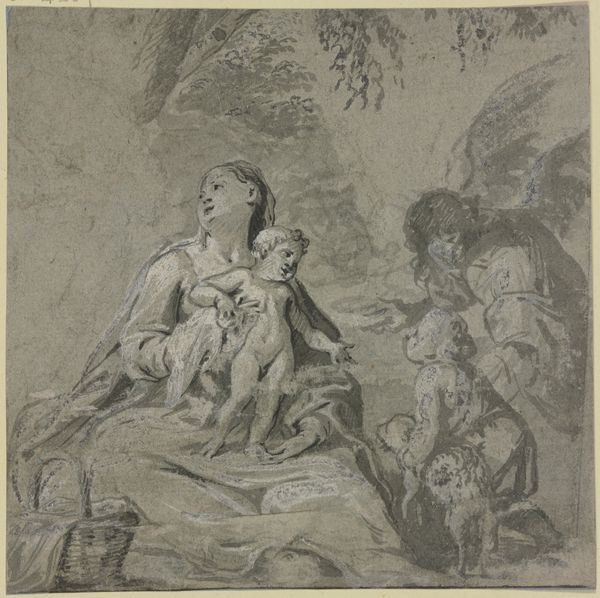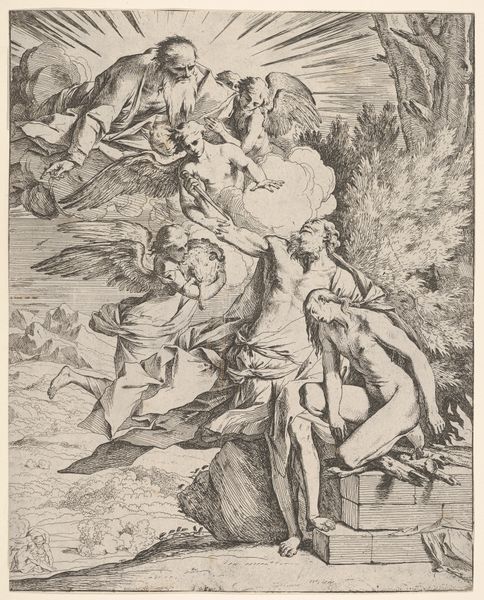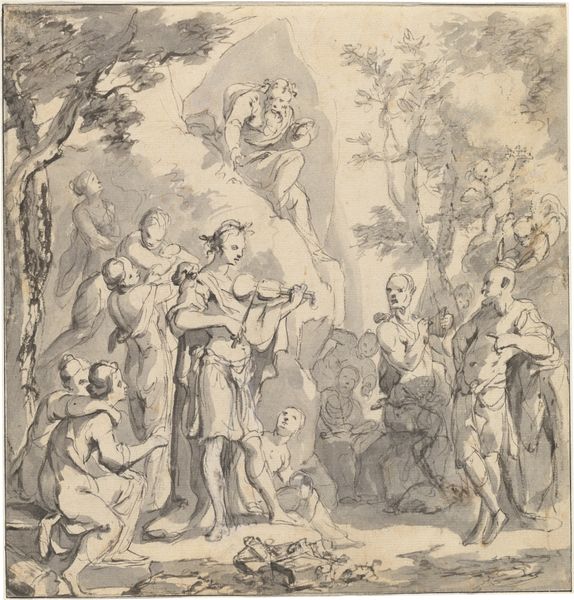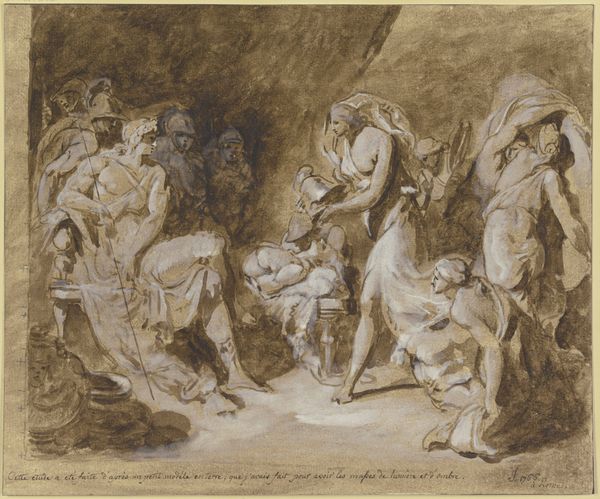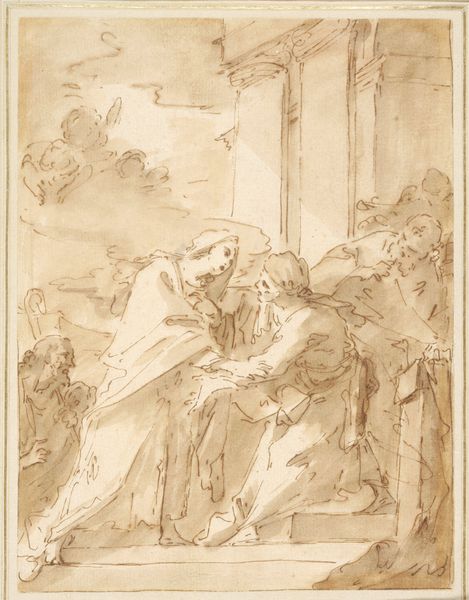
drawing, print, paper, ink, chalk, graphite
#
drawing
#
narrative-art
# print
#
figuration
#
paper
#
ink
#
chalk
#
graphite
#
history-painting
#
academic-art
#
realism
Dimensions: 304 × 267 mm
Copyright: Public Domain
Curator: The somber mood of John Hamilton Mortimer’s “Abraham Sending Away Hagar and Ishmael” strikes me immediately. There's a palpable tension in this sepia-toned drawing. Editor: Sepia tones lend an antique weight to what feels like a loaded narrative. I’m thinking about the production of such tones—ink, chalk, graphite, all worked onto paper. It’s not just drawing, but an assemblage of materials, isn’t it? Curator: Precisely. Observe the composition: Abraham gestures forcefully, directing Hagar and Ishmael away. Hagar’s protective stance towards her son amplifies the scene’s inherent drama. Note how Mortimer uses line weight and hatching to convey depth and emotion. Editor: And think of the material implications! Expulsion. The sheer physicality of being turned away. These aren’t just figures in lines; they represent a profound social rupture, an ejection from place and privilege. What kind of social hierarchies are implied in the material reality of these actions? Curator: Mortimer seems intensely interested in capturing a pivotal moment of rupture, rendered in a neoclassical manner. The architectural and arboreal backdrop add to the monumental weight. It almost transcends the page, aspiring to something grander. Editor: You mention transcendence, but I am struck by the material dispossession at the heart of this narrative. These aren't deities or idealized figures; it is a raw story of marginalization materially articulated by the weight of historical circumstance and perhaps personal struggle etched onto the very fiber of the paper. Curator: I see what you mean. There is that stark realism within the conventions. Yet, notice how skillfully he uses the visual vocabulary of the time—the dynamic contrapposto, the expressive gestures—to elevate this intensely human drama. The play of light and shadow reinforces a structured hierarchy, almost a classical frieze. Editor: Agreed, this is more than just an arrangement of lines and tonal gradations. What has been discarded materially is so resonant. One can almost sense the artist grappling with similar questions of displacement while laying down these strokes. The very act of rendering becomes a form of commentary. Curator: Your material focus casts the entire work into a new light. I leave with an expanded sense of appreciation for its emotional complexity—both narratively and aesthetically. Editor: Indeed, it shows us that materials tell stories of power, displacement, and ultimately, what we choose to represent and what we cast aside.
Comments
No comments
Be the first to comment and join the conversation on the ultimate creative platform.
